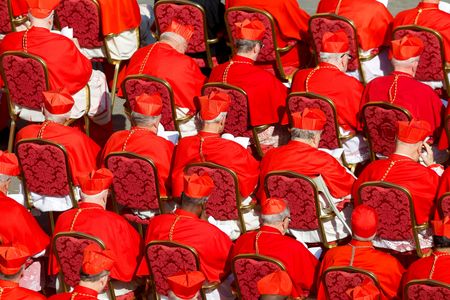VATICAN CITY (Reuters) – Roman Catholic cardinals will hold a conclave to elect the Church’s 267th pontiff and a successor to Pope Francis, who has died at the age of 88. The date of the conclave will be announced sometime after his funeral on Saturday.
Following are key facts about the conclave – one of the world’s oldest and most secretive electoral processes.
WHO TAKES PART IN THE CONCLAVE?
There were 135 cardinals aged under 80 when Francis died and are thereby eligible to take part in the conclave. However, it is not known if all of them will attend.
Cardinals aged 80 or over cannot take part in the conclave but can join the daily, closed-door sessions organised ahead of the election, called general congregations, where the senior prelates discuss issues facing the Church.
The person chosen as pope does not have to be one of the cardinal electors, but in practice now always is.
The cardinal electors come from 71 countries, against just 48 in 2013, when Pope Francis was elected. Italians make up the biggest single national bloc, with 17 cardinals, against 10 from the United States and seven from Brazil. In all, there are 53 cardinal electors from Europe, 23 from Asia, 18 from Africa, 17 from South America, 16 from North America, 4 from Central America and 4 from Oceania.
WHERE DOES THE CONCLAVE TAKE PLACE?
The cardinals hold their election in the Sistine Chapel, under Michelangelo’s frescoes of the Last Judgment and of Bible scenes, including the creation panel with the fingers of God and Adam nearly touching.
Most of the participating cardinals sleep in a Vatican hotel behind St. Peter’s Basilica. They will be banned from communicating with the outside world – no phones, television or Internet.
HISTORY OF THE CONCLAVE
The word conclave, from Latin cum clave (with a key), dates back to the protracted election of Celestine IV in 1241, when cardinals were locked up in a crumbling palace. One conclave in the 13th century lasted two years, nine months and two days. The average length of the past 10 conclaves was three days. The last conclave, which elected Francis in 2013, lasted just two days and involved five ballots.
HOW DOES THE BALLOT WORK?
Except for the first day, when only one ballot is held, the cardinals hold two daily balloting sessions until one candidate has a majority of two-thirds plus one. All participants are sworn to secrecy about the voting.
WHAT DOES THE SMOKE SIGNIFY?
Cardinals cast their votes on papers printed with the Latin words “Eligo in Summum Pontificem” (“I choose as Supreme Pontiff”). The ballots are gathered together and burned at the end of the morning and afternoon sessions, with smoke pouring from a makeshift chimney above the Sistine Chapel.
Black smoke indicates inconclusive votes, while white smoke tells the outside world that a pope has been chosen. The great bell of St. Peter’s Basilica will ring out as an additional sign that a new pope has been elected.
The smoke signals are expected at around noon and 7 p.m. each voting day. However, smoke could emerge earlier if the new pontiff is elected in the first ballot of one of the sessions.
HOW IS THE NEW POPE ANNOUNCED?
After a pope is chosen, a senior cardinal appears on the balcony of St. Peter’s Basilica and announces in Latin: “Annuntio vobis gaudium magnum. Habemus Papam” (“I announce to you great joy. We have a pope”). He identifies the new pope by his given name, with his first name translated into its Latin version, and then announces the papal name the new leader of the Church has chosen.
The papal names most often chosen have been John (23 times), Gregory (16), Benedict (16), Clement (14), Innocent (13), Leo (13) and Pius (12). Pope Francis was the first to choose that name, in honour of St. Francis of Assisi.
Following the announcement, the new pope steps forward to deliver his first public address and his first “Urbi et Orbi” (“To the City and the World”) blessing in front of the crowds gathered in St. Peter’s Square.
A few days later, the new pope will celebrate a Mass that marks the beginning of his ministry.
(Reporting by Crispian Balmer; Editing by Janet Lawrence and Frances Kerry)










